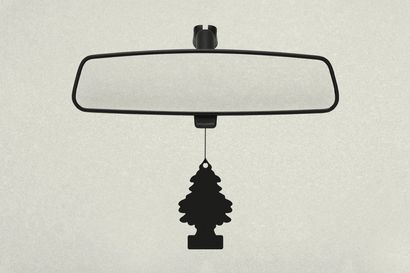From commas to colons, the gentleman’s guide to grammar
Whether you’re in the market for some obscure punctuation or just looking to learn your tenses, here's how to whip your writing into shape...
Good grammar, like pipe-smoking and tying your own bow tie, is a dying art. In the modern world of abbreviations, predictive text and endless emojis, most of us can’t even tell a em dash from an interrobang. And why should we? Who’d rather craft a thought-through, sublimely punctuated sentence than send a GIF of Patrick Bateman rolling his eyes?
But there’s an understated, overlooked benefit to good grammar. Whether you’re rolling into a job interview, writing a letter to an old friend or crafting the perfect opening gambit on a dating app, good grammar gives you an intellectual edge. People may not even consciously pick up on it, but if you correctly deploy an ampersand or bash out some brackets in the right way, they’ll begin to respect you nonetheless.
So, if you’re looking to improve your comma placement, exude a new confidence or just learn what some of these rarer symbols and squiggles actually mean, here’s the gentleman’s guide to good grammar.
Know your colons from your semi-colons
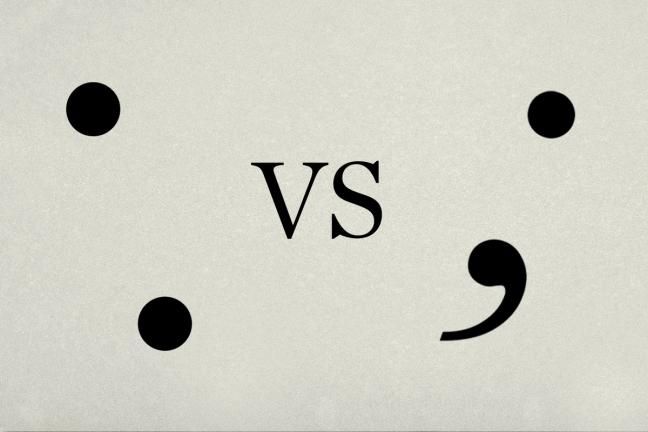
Let’s begin with perhaps the most commonly misused pieces of punctuation. The colon and the semi-colon may look similar, but their uses are plainly different. Here’s a very brief, basic explanation of each.
The colon should be used to provide a pause or break before you introduce related information. This can be to introduce a list of different things, a statement, or a definition. For example:
Steve McQueen loved three things in life: his Persol sunglasses, his Métisse Desert Racer and his Jaguar XKSS.
Whisky (noun): a spirit distilled from malted grain, especially barley or rye.
The semi-colon, on the other hand, provides a different function. This piece of punctuation provides a break in sentences that is stronger than a comma, but not as forceful or final as a full stop. It can either be used to join together two related clauses that could be separate sentences, or with words including ‘therefore’ and ‘otherwise’ to carry on a point. For example:
The Beatles had 17 number one hits; Elvis Presley had 21.
You should always shake a cocktail containing fruit juice; otherwise, your flavours won’t properly integrate.
Get your slashes, dashes and hyphens in line

In grammar, you should definitely know when to draw the line. And which line to draw, come to that. Below, we’ve drawn up some straight-talking definitions of different punctuation lines — and when to use them.
Hyphen: a short line (-) used to join words or parts of words. Examples include ‘straight-six’ and ‘back-swing’.
En dash: a ‘super’ hyphen (–) the width of a capital ’N’. Used when your compound modifier has a multi-word element. Examples include ‘James Bond–style dinner jacket’ and ‘pre–Mille Miglia motor racing’.
Em dash: an even longer hyphen (—) the width of a capital ‘M’. Used stylistically to indicate a pause in a sentence. Stronger than a comma, weaker than a semi-colon. You may use spaces around an em dash if you prefer, but either way is acceptable. They can also be used to indicate sudden interruptions in dialogue. For example: “This meteor isn’t the end of the worl—”
Forward slash: a diagonal line (/) used to indicate the word ‘or’. For example: ‘Please wear white/blue shirts in the office’.
Other lines that appear on a conventional keyboard, from the back slash (\) to the vertical bar (|) and underscore (_) are purely typographical, and should not be used in everyday writing.
Learn some lesser known pieces of punctuation
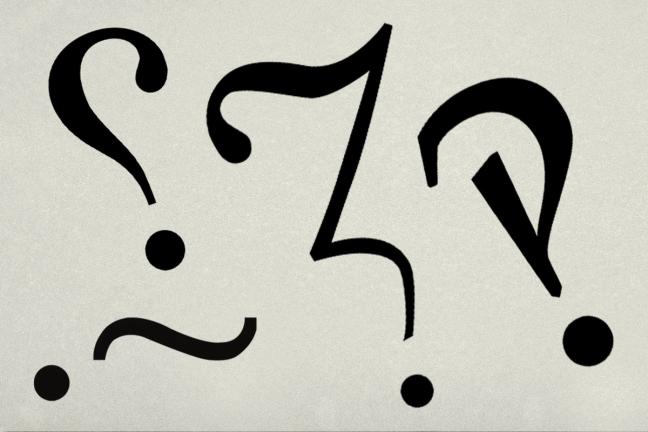
Of course, there are some spicier pieces of punctuation that it’s often fun to drop into digital memos or hand-written communiques. Below, we’ve listed several of our favourite, lesser-known symbols. Feel free to liven up your lines with one of the below.
Interrobang: a symbol (‽) that combines the exclamation mark (!) and the question mark (?). It serves the same joint purposes, ending sentences with disbelief, excitement or confusion. For example: ‘You made this Old Fashioned without bitters‽’
Percontation point: a reverse question mark (؟) introduced in the 16th century. Technically, it is still a question mark, but should only be used to end rhetorical questions. For example: ‘Who do you think you are؟’
Sarcasm mark: a combination of a full-stop and a tilde (.~). Also known as a ‘snark mark’. Typically this precedes a passage that shouldn’t be taken seriously or at face value; writings with a double meaning. For example: ‘.~White Zinfandel could be the best of all wines.’
Doubt point: a symbol that looks a little like a question mark (ɀ̣) that indicates doubt. Used at the end of a sentence. For example: ‘There’s something wrong with the engine. I think it could be the cam beltɀ̣’
Mix up your conjunctive adverbs
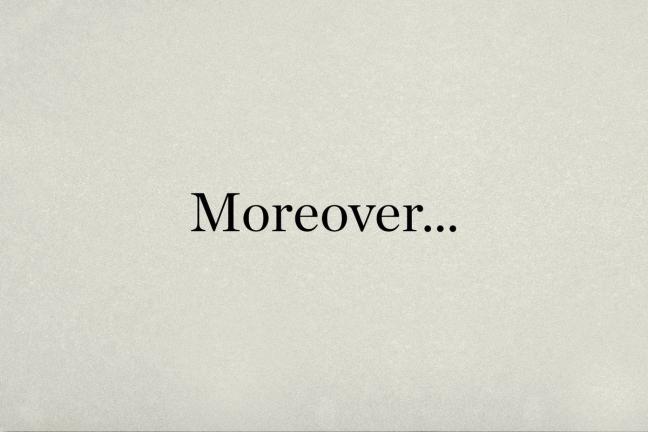
We’ll start by explaining conjunctive adverbs. These handy words are used to link ideas. They concisely show logical relationships between points, clauses and sentences — and add vigour and directness to your writing. Here are some of our favourite:
Moreover: a better way of saying ‘besides’. For example: ‘The whisky tasted great; moreover, the price was competitive.’
Conversely: a better way of saying ‘on the other hand’. For example: ‘Men overwear black tie, while white tie, conversely, is underused.’
Hence: a better way of saying ‘for this reason’. For example: ‘The chef lost his sense of taste; and hence had to retire.’
Likewise: a better way of saying ‘in the same way’. For example: ‘Ian Fleming enjoyed travelling to Jamaica, and James Bond, likewise, was known to frequent the island nation.’
Accordingly: a better way of saying ‘as a result’. For example: ‘The car was not speeding; accordingly, there will be no fine.’
Try to learn all the English verb tenses
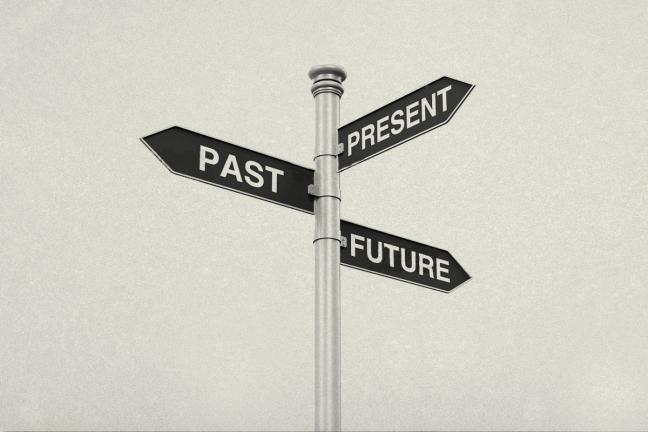
This is a good challenge to sink your literary teeth into on a rainy afternoon. Grab a notebook, get jotting some examples and try to remember each of the below:
Present Simple. Something you do every day, month, or year. For example: ‘I travel every day.’
Present Continuous/Progressive. Something happening currently. For example: ‘I am travelling now.’
Present Perfect. Something that you have just completed. For example: ‘I have travelled here.’
Present Perfect Continuous/Progressive. Something started in the past, but still happening. For example: ‘I have been traveling for a day.’
Past Simple. Something you have completed and finished at a certain time. For example: ‘I travelled here yesterday.’
Past Continuous/Progressive. Something that has been interrupted by another action. For example: ‘I was travelling when the engine failed.’
Past Perfect. Something that encompasses two actions, with the initial action being completed first. For example: ‘I had travelled by bicycle when the car arrived.’
Past Perfect Continuous/Progressive. Something that encompasses two actions, with the initial action being completed at a specific time first. For example: ‘I had been travelling by bicycle for one hour when the car arrived.’
Future Simple. Something that will happen in the future. For example: ‘I will travel tomorrow.’
Future Perfect. Something that will be completed in the future before something else happens. For example: ‘I will have travelled to the location by the time you arrive.’
Future Continuous/Progressive. Something that has not been completed by the time a second action is complete. For example: ‘I will be travelling when you arrive.’
Future Perfect Continuous/Progressive. Something that will be happening in the future when it is interrupted by a second action at a specific time. For example: ‘I will have been travelling for one hour when you arrive.’
Drop in some obscure plurals

How about something a little less heavy? We English speakers have some curious, obscure ways of pluralising words — and nothing will show you mastery of the language more playfully than dropping some of these into conversation. We’ll start with the general rules, and then move onto some outliers.
- For regular nouns, add ‘-s’.
- For singular nouns ending in ‑s, -ss, -sh, -ch, -x, or -z, add ‘‑es’.
- For nouns ending in ‑f or ‑fe, change to ‘-ve’ before adding ’-s’.
- For nouns ending in a consonant and then ‘-y’, change the ending to ‘ies’.
- For nouns ending in ‑o, add ‘‑es’.
And now for some fun ones…
Mongooses. That’s right, no ‘geese’ in the plural.
Plateaux. Sounds like a delicious desert; actually the plural of ‘plateau’.
Octopuses. People say ‘octopi’. But, derived from Greek, it shouldn’t follow Latin rules.
Culs-de-Sac. No ‘cul-de-sacs’ here, thank you very much.
Passersby. Similar to the above. Whack the ’s’ in the middle of the word.
Low lifes. A gaggle of undesirables are not ‘low lives’.
Sphinges. The correct plural of ‘sphinx’. Good luck getting that into conversation.
Want more obscure etiquette? Here are the best handshake alternatives for these troubling times…
Become a Gentleman’s Journal member. Find out more here.

Become a Gentleman’s Journal Member?
Like the Gentleman’s Journal? Why not join the Clubhouse, a special kind of private club where members receive offers and experiences from hand-picked, premium brands. You will also receive invites to exclusive events, the quarterly print magazine delivered directly to your door and your own membership card.


